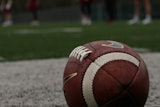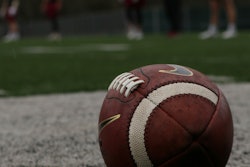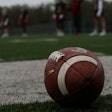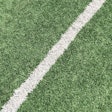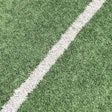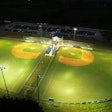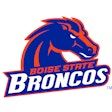Quality sports turf maintenance requires a keen eye and careful scheduling.
 Photo courtesy of Pam Sherratt/OSU
Photo courtesy of Pam Sherratt/OSU
At any level, grounds maintenance success depends as much on timing as anything else. Here, then, is a best-practices primer on the most vital turf-care considerations and their proper scheduling, with input from turf-care specialist Floyd Perry, president of Orlando, Fla.-based Grounds Maintenance Services for Sports Fields.
Mowing The maintenance ritual with the most immediate visual impact, mowing can also cause undue stress on the grass plant. The old rule that no more than a third of the grass blade should be removed in any one mowing still applies. Yet, with professional bluegrass fields being cut to a height of 1 3/4 inches or shorter these days, another axiom comes into play: the shorter the grass blade, the shallower the root system. Pro fields are typically mowed daily, while collegiate fields are mowed four or five times a week, and high school and recreational fields (likely cut to a height of 2 1/2 inches) perhaps twice a week.
Fertilization Successful turf growth starts underground, and the shorter the turf, the more help required of the root system. The vast majority of athletic fields grow in native soils, with nutrients built in. However, on high-end sand-based fields, which inherently lack nutrients and the ability to hold onto nutrients supplied through fertilization for long periods of time, adding nitrogen, phosphorus and potassium becomes a monthly requirement. Moreover, the fertilization schedule for all types of fields tends to be more aggressive in the South and in the nation's midsection, with their longer growing seasons allowing for monthly or bimonthly applications, as compared to the North, where no more than three applications annually are the norm. The most productive time for application in the North may prove to be in the fall, giving the plant nutrient product all winter long and allowing it to reap the full benefits of that product at the earliest signs of spring.
Most fertilizers take granular form, as opposed to the sprayed liquid variety often used on golf courses, and manufacturers now offer coated granules for time-released fertilization over a period of 30 days or so. While this mitigates the burnout risks of over-fertilization, turf managers should still be careful not to speed the growth of their grass too greatly, since they will ultimately be forced to mow away the benefits of the added nitrogen stored in the grass blade.
Irrigation Among the most important items on the turf manager's agenda, irrigation is a year-round concern in the South, where the Bermudagrass growing season extends from May through September, only to be replaced by ryegrass overseeding once the Bermuda turns a dormant brown. In areas farther north, irrigation systems should be inspected for functionality as soon as the frost leaves the ground - ideally between April 1 and May 15, depending on the locale.
"Regardless of the region, the key to the irrigation process is working with your local university turf extension agent and coming up with a schedule for your area," Perry says. "Many people in the athletic field industry over-irrigate, because they feel they need to water every day or five times a week. That may not be the case." Over-saturation of fields can lead to root rot or, at the very least, uneven playing surfaces resulting from heavy foot traffic on soil that isn't sufficiently firm, Perry adds.
Aeration More than anything, grass needs water and oxygen to survive and thrive. Water comes in the form of either natural or artificial irrigation, while oxygen delivery is enhanced only through aeration.
"The whole aeration agenda has changed tremendously in the past 10 years because equipment manufacturers are listening to their end users and creating different forms of aeration, rather than just advocating the old method of pulling cores," Perry says. "I can aerate every week in the South by using different aeration tools that break the surface down and allow oxygen and water to move vertically very easily."
While aeration involving the pulling of cores with hollow tines is still widely regarded as the most effective strategy in terms of providing oxygen to the root zone and alleviating soil compaction, it is also the most disruptive and labor-intensive. A field may take up to 15 days to recuperate from core aeration, a circumstance that dictates cores be pulled only during substantial down times, which may amount to once per year in the spring or twice per year - once in the spring and again in the fall.
Less disruptive aeration techniques involving solid tines or slicing tines can be employed much more frequently, even during the playing season. Both methods sufficiently penetrate the soil with small piercings or narrow slits to allow for water and oxygen infiltration to the roots, while leaving no byproduct on the playing surface. However, the openings created by solid and slicing tines will close faster than those created by coring tines, which means a groundskeeper may want to slice a field in two to four directions as often as once a week. Increased compaction resulting from heavy foot traffic during the playing season will also dictate more frequent aeration passes using non-coring equipment.
To mitigate sidewall compaction sometimes created by solid tines, manufacturers have developed tines that exhibit a spring action as they leave the ground, breaking up the traditional straight poke hole. Similarly, a fracture tine is a slicing tine that is set slightly off center, leaving not a straight slit but rather a somewhat twisted slit that fractures the surrounding soil. Deep tines, meanwhile, can penetrate the soil profile nearly a foot, not only facilitating the introduction of oxygen deep into the root zone, but enhancing drainage as well.
Topdressing Often applied on the heels of aeration, topdressing serves to amend the soil profile or simply fill in low spots that develop on fields during normal use. Straight sand is the most common topdressing material, though sand can be blended with organic peat (for added nutrients) or calcined clay (for improved drainage). Because aeration, and particularly core aeration, enhances topdressing's effectiveness, the entire two-pronged process should be scheduled to coincide with a field's substantial down time - perhaps in April or, more likely, November.
Overseeding Overseeding can take place at almost any time of year, barring winter snow cover, and some Southern-based turf managers overseed with Bermudagrass three or four times during the spring and summer, depending on the timing of their pre-emergent pesticide application (see below) and their aeration and fertilization schedules. In the North, suitable times for overseeding with ryegrass, Kentucky bluegrass and fescue include March or early April, as well as November. In the latter case, the seed will sit dormant all winter before germinating in the spring with an adequate rise in soil temperature. Seed-to-soil contact is critical, dictating that any substantial thatch buildup in the turf be removed prior to seeding. This can be done by dragging the field with a spring-tine attachment or mowing the grass (particularly Bermudagrass) with a mower that cuts the blades vertically while breaking down the thatch layer.
Keep in mind that the timing of seed germination varies by grass species. Depending on conditions, ryegrass will begin to appear in only seven days, and Bermudagrass in seven to 14 days. Meanwhile, Kentucky bluegrass and fescue may take between 20 and 28 days to germinate.
Herbicide, Pesticide and Fungicide Application Weeds represent a stubborn hurdle to the development of quality sports turf. Most turf managers are happy to limit weed infiltration to less than 10 percent on their practice and game fields. Says Perry, "To kill 100 percent of weeds you have to work hard and spend a lot of money."
Herbicides come in two forms: pre-emergent and post-emergent. Pre-emergent herbicides are often carried on fertilizer granules or applied separately in liquid form. They create a barrier at the soil surface that doesn't allow weed seed to germinate. If weed seed in a particular region of the country typically germinates in April, then an application of pre-emergent herbicide is in order in March. It should be noted that pre-emergent herbicide is not a cure-all. In fact, once play resumes on the field and the barrier is broken by foot traffic, weeds can still develop.
"Weed seed can live up to 125 years below the ground before it's exposed to oxygen, light and water and then germinates," Perry says. "That's one of the difficulties faced on athletic fields. Every time the field is fractured with foot traffic and more bare ground is exposed, weed seed is also exposed."
Aeration, too, can expose weed seed and thus foster germination, Perry adds, forcing turf managers to frequently follow up their aeration passes with the application of a weed-and-feed fertilizer. If weeds persist after one application of pre-emergent herbicide, a second application may be necessary, perhaps two months apart. Pre-emergent herbicide may even be applied in the fall, but only on fields that aren't scheduled for overseeding, since the herbicide barrier will suppress turf seed germination, too.
Post-emergent herbicide, meanwhile, is spray-applied after the weed seed has germinated, suppressing the weed's growth through the weed blade. Subsequent applications may be necessary 15 and 30 days after the initial treatment, and depending on the percentage of the field occupied by weeds (20 percent or less), may only amount to spot spraying by hand so as not to waste money on total field coverage.
Pesticides, with different formulations targeting, say, white grubs in the North and mole crickets in the South, are typically applied on an as-needed basis determined by visual monitoring of the turf. The same can be said of fungicide use, though fungus issues tend to be a greater concern to turf specialists in regions of the country where extreme day- and nighttime temperature fluctuations stress the grass plants and leave them susceptible to disease.
The equipment necessary to complete each of these tasks continues to evolve to the benefit of turf managers everywhere, according to Perry. But the equipment that no turf manager can do without is his or her own eyes. Frequent visual assessments of the state of any sports turf are critical to optimizing a field's look and performance. "I encourage athletic directors to walk their fields every Monday morning, just to get a visualization of any change from the previous Monday morning," Perry says. "You have to really be cognizant of visible changes in your turf."














